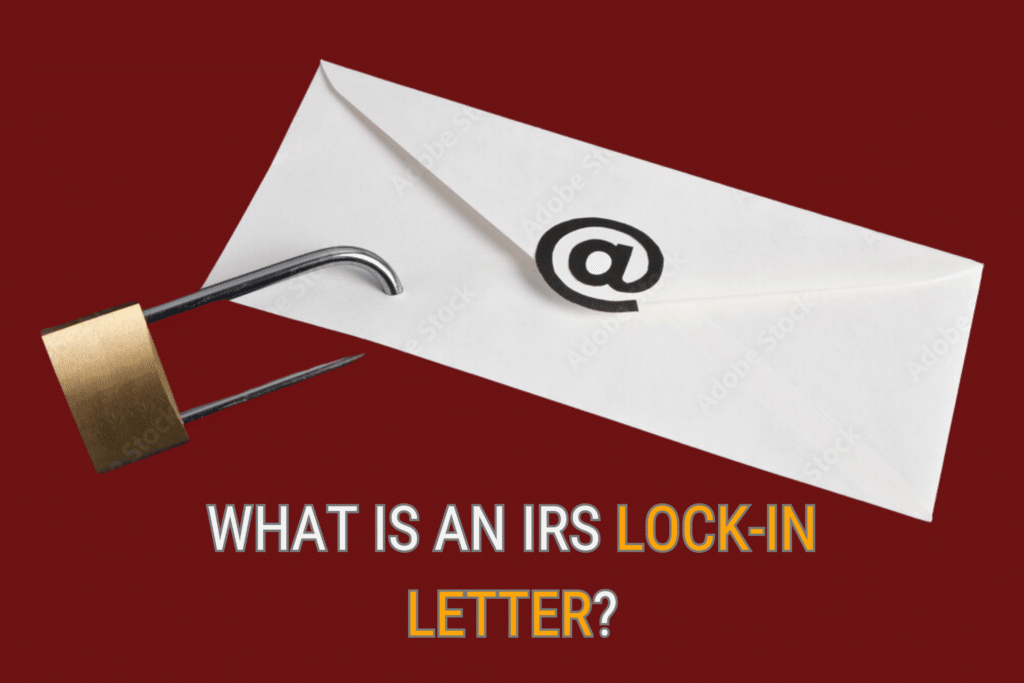IRS Lock-in Letter: How to Handle It if You Receive One?

Getting a letter from the IRS can make anyone worry, but one type of letter called the “Lock-in letter” might not be familiar. This letter doesn’t imply debt, but it’s important because the IRS is telling you that something’s not right with how much money is being taken out of your paycheck for taxes. This article is here to help you understand what a Lock-in letter is, why you got it, and what you should do next.
Imagine the Lock-in letter as a warning sign. The IRS is informing you that they’ve spotted an error in the amount of money being withheld from your paycheck for taxes. It’s not a penalty, but it’s a sign urging you to solve the issue before it becomes more serious. Learning about the Lock-in letter equips you with the understanding to manage the situation and steer clear of IRS complications.
What is an IRS Lock-in Letter?
An IRS lock-in letter is a communication sent by the Internal Revenue Service (IRS) to an employer, informing them that they must withhold federal income tax from an employee’s wages at a specific rate. The IRS determines this rate and is usually different from the standard withholding rate based on the employee’s W-4 form.
The IRS may issue a lock-in letter if they believe an employee’s withholding allowances are incorrect, which could result in underpayment of taxes. This could occur if an employee claims too many allowances on their W-4 form, leading to insufficient tax withholding.
When an employer receives an IRS lock-in letter, they must adjust the employee’s withholding according to the instructions provided in the letter. This means the employer must use the withholding rate specified by the IRS in the lock-in letter, regardless of what the employee’s W-4 form indicates.
What are the types of IRS lock-in letters?
The IRS issues different types of lock-in letters based on specific situations and circumstances. Here is a general overview of the types of IRS lock-in letters that IRS commonly issues:
IRS Lock-In Letter 2802C
IRS Letter 2802C is a formal communication from the IRS to taxpayers indicating that their current federal income tax withholding rate is deemed insufficient and provides instructions on adjusting it. Recipients can self-correct by submitting an updated Form W-4 within thirty days or appealing the IRS decision. The letter may suggest using the Tax Withholding Calculator on the IRS website to determine the correct withholding amount. Failure to respond could result in subsequent lock-in letters establishing a specific withholding rate for the employer to follow, helping ensure accurate tax withholding throughout the year.
IRS Lock-In Letter 2800C
The IRS issues Letter 2800C when the IRS determines that the withholding information provided by the employee on their W-4 form is incorrect or insufficient to cover their tax liability. The IRS will provide a specific withholding rate and allowances the employer must use for tax withholding purposes.
IRS Lock-In Letter 2801C
The IRS sends Letter 2801C to employees who have claimed incorrect exemption status or excessive dependents, explaining how to appeal within 30 days. If not contested, the specified filing status becomes “locked-in” for 30 days, during which employers must adjust withholdings on the lock-in date. The employee can submit a new Form W-4 with at least the lock-in withholdings.
IRS Lock-In Letter 2808C
The IRS issues Letter 2808C to an employee who has appealed their tax withholding status. The IRS determines that the initial filing requirement as “single with no dependents” is not applicable. Unlike the original 2800C letter, the 2808C is an immediate modification and doesn’t have a 60-day waiting period. The letter informs the employee about the revised withholding status that will be effective immediately, which typically differs from the “single with no dependents” status.
How to Reverse IRS Lock-in Decision?
If you receive a Lock-In letter and wish to reverse the decision, contact the IRS within 30 days. Gather your documents such as Form W-4, relevant worksheets, current pay stubs, withholding allowances, dependent details, and recent tax return. Present your explanation for a different withholding rate. If the IRS agrees, they may reverse the Lock-In terms. If they decline your appeal, you must wait at least three years to remove the lock-in. During this time, your employer can’t change your withholding rate or allow electronic Form W-4 changes. After fulfilling obligations for three consecutive years, then you can request a lock-in release.
How to Avoid Future Lock-in?
To avoid getting those IRS lock-in letters, it’s really important to make sure your tax withholding is spot on. You can do this by keeping your Form W-4 updated whenever things change in your life, like if you get married, have kids, or your income shifts. Using the IRS Withholding Calculator can be a big help. It can help you figure out the right number of allowances for your situation and get a better handle on how much you should be withholding. If you’re uncertain about your withholding, it’s always safe to consult with a tax professional for guidance.


